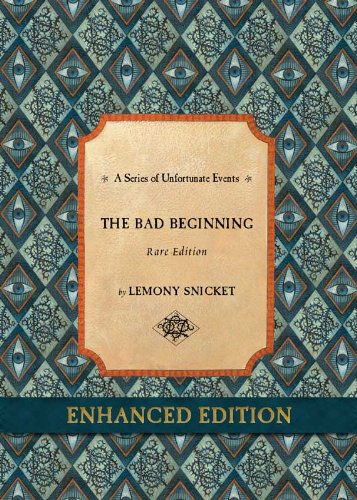As Snicket says, if you don’t like watching children endure hardships, you may as well stop reading now.
Let me first say that recommending an age is impossible for this book. As a child, the movie was among my favorites, but I seldom met another kid who felt the same. Now I know why.
The Bad Beginning is written at a child’s reading level, clear as day. Yet, it wrestles with adult themes of grief, acceptance, and marriage. Nothing in this book will land unless a child has experienced grief as the Baudelaire children have. So, while an 8-year-old may understand the words, he/she won’t appreciate the story for years to come.
All of this is to say, exercise judgment when recommending this book to children.
Now, what is this book about? Though it couldn’t start more peacefully, The Bad Beginning wastes no time thrusting the children into orphanhood and injustice. One thing after another lands them in the worst place possible— Count Olaf’s house. The children immediately peg Count Olaf for the monster he is, and the reader is left wondering why all the adults turn their backs on the children here.
Nevertheless, the children are left alone. They must learn to appease Count Olaf while seeking their freedom.
If you’re hoping for a happy-go-lucky ending, Snicket marks a good place to stop reading, but if you want to walk with the Baudelaires in their grief and suffering, there will always be more unfortunate events to read.
Let me know if you think I should read them!
